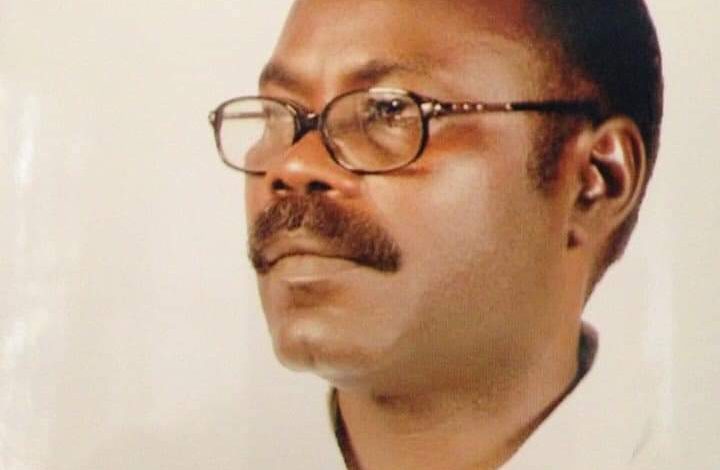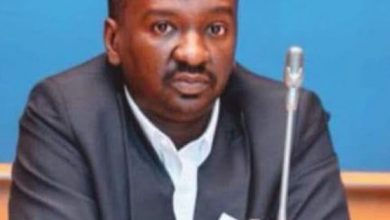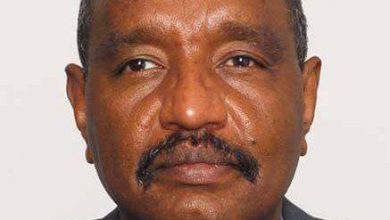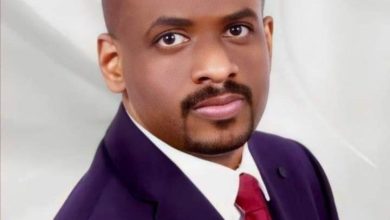State of 56 Deception, Deadly Trap

By: Hussein Arko Minawi
In dealing with the crisis that the country is currently experiencing, it requires space of mind so that a person can correctly evaluate the slogan of State of 56 or the term remnants, which are two weapons that some people use as an excuse to wage an endless war. When a person is led blindly behind a slogan, he wrongs himself a lot before he wrongs others, and it is obvious that in this case he falls under the penalty of conscience. The most difficult test for a person when making judgments about things is for his pendulum or indicator of thinking to move away from reason to the point of swinging in an extreme way to the pole of emotion. .
This short introduction will in no way be an introduction to providing justifications to refute or deny the existence of State of 56. Rather, it is a very important introduction to refuting the justifications that some people are riding on in the ongoing war to strike the unity of Sudan to death, and even to demonstrate the degree of opportunism that has exceeded the Machiavellian idea itself of waging war against Sudan with the justification of the state of 56 or the remnants.
Yes, 1956 is the year of Sudan’s independence, and there is nothing wrong with linking the modern Sudanese state with this date. Therefore, it is permissible, both terminologically and metaphorically, to call it the State of 56 It is also permissible to link this state, i.e. the state of 56 with practices that were an opponent to our national history, especially the wars that have passed since independence, starting with the war of the south passing through the Nuba Mountains and the Blue Nile, the latest of which is the Darfur War, which is a war that took place in a context completely different from the ongoing war and with visions and programs that do not at all resemble the ongoing war, not to mention the horrific crimes committed daily against civilians by the Rapid Support Forces (RSF) .
In this war, that is, the war of April 15, 2023, there was a great deal of confusion in concepts, and for many “light and darkness,” became the same as Al-Mutanabbi said, and the responsible for that was the media. There was confusion between a war of visions and programs that had clear political justifications on the Sudanese scene that extended for decades, and a war, as it was absurdly called, that had no political visions or a national program.
So that the conversation is not just political consumption, let us classify the wars that occurred in Sudan and search for a comparison between them. In addition to military coups, the Sudanese state has tried about seven wars, including the current war, in addition to at least three peaceful demand movements in Darfur, the Nuba Mountains, and the East.
The military action against the state began months before independence, then that action turned into a military-political movement in South Sudan called Ananya 1, and the war did not stop until after the Addis Ababa Agreement of 1972. The political vision or program for that movement was to obtain a form of self-government, and indeed This was achieved in the 1972 Addis Ababa Agreement and Ananya Vision 1, which had a major influence in the Round Table deliberations of March 1965 where the federal agenda for the South was included.
The war in the south resumed ten years later with a clearer political program and vision under an organization known as the Sudan People’s Liberation Movement (SPLM) . At this stage, the political vision was clearer and more comprehensive, as the SPLM’s program focused on restructuring the Sudanese state under the name New Sudan.
Between 1970 and 1975, a political-military party alliance was formed, known as the National Front. The alliance attacked the Triangle Capital under the leadership of Brigadier General Muhammad Nour Saad. This alliance came as a reaction to the May 1969 coup against the then-elected government, and the alliance had a clear program, which was to restore democracy.
In mid-1990, a political-military organization with a regional dimension was formed under the name of the Federal Alliance, led by Ahmed Ibrahim Derej and represented by Dr. Sharif Harir. This coincided with the Federal Alliance establishing military organizations affiliated with the various party forces in alliance with the SPLM, and taking Asmara as its headquarters. These military-political forces had a prior program for restoring democracy, but the organization of the Federal Alliance distinguished itself from the rest of the political forces by demanding the application of federalism in Sudan, similar to the historical demand of the political movement in the south.
In early 2000, a military-political movement arose in Darfur with different wings under the name of the Sudan Liberation Movement. It quickly split into two wings, one headed by Minni Arko Minawi and the other headed by Abdel Wahid Mohamed Nour. Another movement emerged in the name of Justice and Equality, led by Dr. Khalil Ibrahim. No matter how clear there were ideological positions between the Liberation, Justice and Equality Movement, there was agreement on the vision and program, and this was clearly evident in the texts of the Abuja Peace Agreement drafted by all parties, although only one party signed that agreement due to a slight disagreement in the authority’s protocol. It is observed that all the wars mentioned are of a close nature and their content is almost similar, that is, each movement has a political program and vision upon which it built the establishment of the Sudanese state.
On April 15, 2023, a war broke out from within the military component, between the army institution and a military organization affiliated with the army institution called Rapid Support, which was formed for limited purposes in confronting armed struggle movements and whose integration into the army institution was not completed with clear frameworks for integration. Although the army and the Rapid Support participated effectively and in full coordination in overthrowing the Bashir regime, the tension between them remained the dominant situation until the moment of the explosion on April 15, 2023. It was observed that throughout the period of tension that extended from April 2019 to April 15, 2023, it did not surface or, say, was not raised in the first place. One day, the idea of State of 56, or the term remnants of the Rapid Support Command, which means the Rapid Support Command, fell into the trap of a proxy war.
So what are the necessary data to provide an exact copy of rapid support? The answer to this question lies in these details.
1- Rapid Support Forces (RSF) is a purely military organization and has nothing to do with politics.
2- RSF was formed to protect former President Omar Hassan Al-Bashir against the strong armed struggle, first and second from a possible rebellion within the army.
3- The RSF was merely an appendage to the army institution and was not integrated into the army. After the fall of the Inqaz, the conflict was over the integration. Most likely the idea of rebellion against the state came due to the sharp disagreement over how to integrate the RSF into the army. Sudanese, regional and international political parties took advantage of this disagreement to push Mohammad Hamdan Dagalo to undertake the adventure of seizing control of the government.
– The idea of establishing the RSF is the idea of the State of 56 and the idea of the remnants, so to speak. Mohammad Hamdan Dagalo, his brother Abdul Rahim, and many of the leaders of the RSF were originally the leaders of the State of 56 and the remnants, because the reality says that, until 2013, Mohammad Hamdan Dagalo was not a person of any importance in the political and military establishment in Sudan, thanks to the remnants and the state of 1956, the Dagalo family empire arose and became a falcon with hogs, beaks, claws and wings of terror with a blade studded with a war machine of missiles, artillery and other formations of fire.
The idea of reaching power under the Rapid Support Command was being promoted in one way or another before April 15, 2023, and the strongest testimony is that of the activist Ahmed Al-Dhi Abdul Rahim, who is from the Misseriya. He mentioned in his video meeting with Abdul Rahim Dagalo that the man has the idea of ruling the Baggara, that is, the state of “Attawa” and he confirmed Ahmed Al-Dhi spoke to Abdel-Rahim Dagalo for more than two hours, and the man did not touch, neither closely nor remotely, on a national project or saving the state. He only talked about the necessity of Baggara rule, that is, the rule of Attawa.
Well, if these are the data, we must wonder where the idea of the 1956 state or the remnants of the last war came from. Of course, when we return to the references of the political conflict after the fall of the Inqaz, especially the reference of the framework agreement, without a doubt, all indicators say that the Rapid Support Command borrowed the idea of the 1956 state and the remnants as an intellectual and political weapon from the political systems that were in constant conflict with the Islamic movement “Al-Kizan. The
RSF ought the battle with it, and it does not know it won this war. The victory will not be its victory, but in practice it is a victory for the traditional opponent and the rapid support is only fuel for this war. In this context, we have previously indicated elsewhere that there are postponed battles in Sudan, including the battle of the right and the left, and the leader of the RSF appears. The commander of RSF swallowed the bait in this trap because the fierce confrontation carried out by the Rapid Support Commander against the military establishment, which many believe is a stronghold of the Kizan, over the past thirty years was the first to include political organizations that rival the Kizan, most of which are left-wing organizations that always remain vigilant and only sleep on their revenge.



